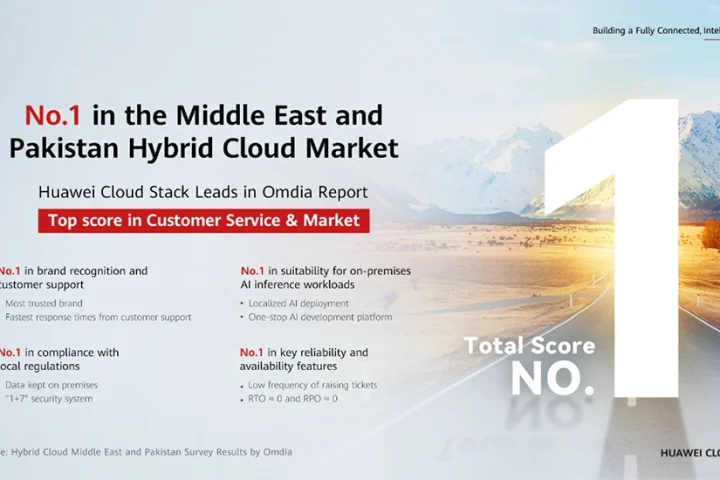As the CEO and Co-Founder of Qafila, Atif Rafiq wears multiple hats from working with his team to identify tasks and goals and bottlenecks for the new business. He also monitors all aspects of the business including customer feedback, performance and updating investors.
Qafila is re-engineering the shipping process. It is digitising the shipping process by simplifying it and providing structure to the shipping data across supply chains. The platform simplifies shipping into three broad digital offerings: book, manage and track.
This allows shipping managers to receive online quotes for shipments, manage the document handling process and track them real-time through online dashboards. In the process, a customer’s shipping data is digitised and given structure in the supply chain.
Looking at digital transformation, it is not a process with a start or an end. Neither is it just about the implementation and the use of technology. Digital business transformation, at the fundamental level, is the ability of an organisation, its leaders and employees, to adapt to rapid changes brought forth by evolving digital technologies.
It is how technology changes the conditions under which business is done, in ways that changes the expectation of customers, partners, and employees. “We strongly believe change is the new constant and speed of adapting to change is the currency of future,” explains Rafiq.
The idea of continual adaptation to a constantly changing environment with a key focus towards the customer’s problem and their experience is Qafila’s key objective.
Qafila’s platform allows users to manage their supply chain through a cloud platform by giving them 24×7 accessibility, ability to schedule transport plans at the time of booking, and bring communications related to this, in one place. It also helps shipping managers manage shipment related information in a shared workspace with complete transparency and visibility into the shipping process.
Qafila’s technology not only provides data but also works with the user to use that data for streamlining the logistics process and identifying potential bottlenecks. This unlocks new opportunity within the supply chain with data-driven insights and customised reporting because data quality provides the basis for all optimisation efforts in any organisation.
From Qafila’s perspective, it is always better to start with the pain points of the target audience and show how the solution solves the problem with speed, flexibility and cost effectiveness for them. If the user can double his productivity with the same infrastructure, or if they can reduce cost and have the same productivity, they would be interested.
Qafila is creating a new category of digital freight forwarders in UAE, which gives shipping managers the tools to bring transparency, reliability and efficiency in their supply chain.
“Being the very first one is both exciting and terrifying because we need to educate our customers, build the awareness before we make a sale. The industry is fragmented and highly competitive where supply chain is viewed not as a competitive advantage, but as functional business unit which is why business leaders do not put supply chain digitisation as their priority,” says Rafiq.
During a digital transformation project, “I think the biggest takeaway is keeping an eye out on the horizon,” adds Rafiq. Companies should review the digital landscape, periodically, for potential changes that can threaten a business. Leaders and employees should develop a fundamental digital literacy and keep that knowledge up to date. Claiming, we are not a digital company, is no longer an option.
The rate of change is at the point where failing to pay attention and developing a working knowledge of the present state of digital technologies all but guarantees obsolescence and disruption.
Transforming the company is not enough, begin rebuilding the organisation in a way that it can adapt to constant change. Adaptable processes involve modular organisational structures that can be readily reconfigured and systematic processes that provide employee opportunities to continue developing and updating their skill sets.
They also include strong communication practices such that all members of the organisation can know its strategic direction and be informed when changes to this direction occurs
Companies that were most successful with respect to digital transformation were those that invest time, energy, and money into making it happen. The challenge is that the gap between what is possible technologically and what companies are actually doing is growing wider. Waiting too long may allow new or established competitors to captilalise on these changes, or result in a gap between where your company is and where it needs to be that becomes too wide to overcome.
Reflects Rafiq, “Digitalisation and transformation for us is not a process with start or an end, neither is it the adoption of the latest technology, nor the use of it. Digitalisation is the constant strive for improvement and change. We have to keep pushing the envelope forward with new initiatives, improve on the old ones, and focus on the customer experience, improving process efficiency and keeping up with the changing technology landscape.”
Tips for transformation
- Digital is quantitative.
- Build a specialised digital team.
- Keep an eye on customer needs not their wish-list.
- Becoming a digital company is also becoming a data-driven company
- Digitalisation should be part of organisation culture.
- Business goals and objectives will change with a focus on digital.
- You need people who are comfortable with being uncomfortable.
- Create an atmosphere of collaboration throughout the organisation.
- Be transparent and open new ways of collaborations for teams across function and departments.
- When people work side by side on cross functional teams, they better understand each other’s challenges.
- Data holds a lot of insights and that insight should be used as a catalyst for digitalisation and change.
- Management should be the driver of change and digitalisation is a top down approach.
How to measure the benefits of transformation
- Process efficiency
- Reduce cost and improve profitability.
- Asset performance management
- Real time data feed for maintenance and to avoid disruption.
- Empowering operators
- Decision making with business rules and user management.
- Resource efficiency
- Standardise process and automation for scalability.
- Reliability
- Quality and quantifiable data to use in the decision making.




















